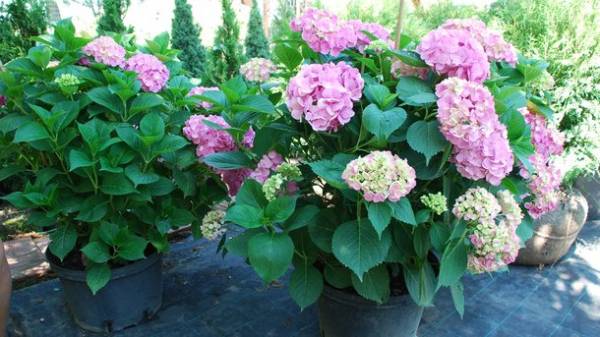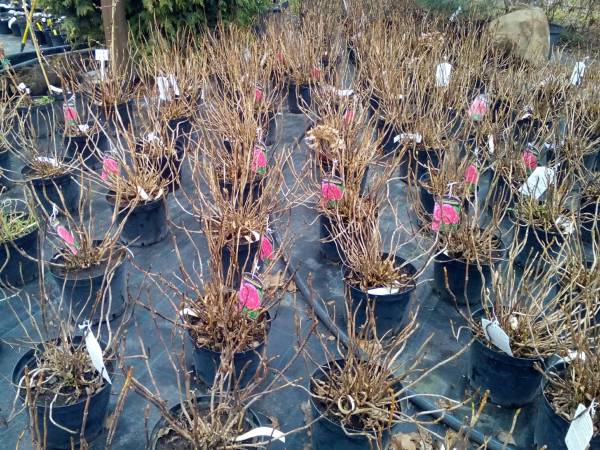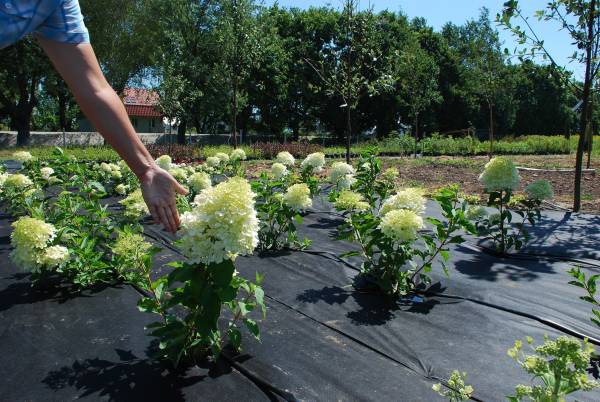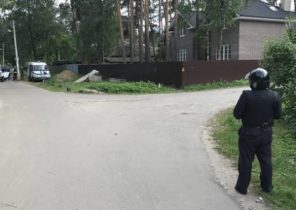
Many gardeners love hydrangeas for her simplicity and beautiful lush blossoms — white, lilac, pink, that begin to bloom from mid-summer and decorate the garden until the autumn. This plant belongs to the genus of flowering plants in the family gortenziya, which includes, according to various estimates, from 30 to 80 species of shrubs, lianas and small trees. Hydrangea can rightfully compete with the rose for the role of “Queen of the garden”, but it is more easy to care for and less capricious. However, it needs care.
The secrets of growing this garden favorite “Today” reported agriculturist Yulia Kubrak and Kiev dendrologist Peter Rakovec.
PLANTING: SO FAR, NO KIDNEY
The most favorable time for planting is spring after thawing of the soil, but before Bud break. Seedlings grown in containers (with the closed root system), can be planted all season.
“Dug a hole depth of 40-50 cm and a diameter of 40 cm filled fertile soil (humus and peat), adding 50 g mineral fertilizer or special soil for hydrangeas with an average pH of 5.5, — said Yulia Kubrak. — Hydrangea suffers greatly from lime in the soil, so you need to maintain the acidity of the soil. Distance between future bushes should be at least 1.5 metres for a hydrangea macrophylla (often called the garden), and 1-2. 5 m for the tree and paniculate. In the center of the pit pour a small mound, place it on the plant, and the roots spread around the hole. Covered with earth, tightly stamped pour. When planting in the container in the planting hole is done on the sides 15-20 cm more than the size of the container and 30 cm in depth.”

Best time is spring
FEED AND CARE
Plant care is mulching around-trunk circle, fertilizing and pruning. Mulch the planting location to protect the roots in the summer from overheating, in the winter from frost, and also to curb the growth of weeds. Shredded wood chips, bark or peat spread around the shrub with a layer thickness of 7-10 cm the Procedure is conducted twice: in late spring and in autumn, after the onset of sustained freezing temperatures.
Feeding is carried out in several stages: before planting the plants in late may — early June and then every two weeks. In mid-July to early August feeding is stopped, the plants have time to odrevesnevshie for the winter.
Fertilize the hydrangea with organic matter (for example, a solution of bird droppings 1:10) or mineral fertilizers (20 g superphosphate, 10 g of urea, 10 g of potassium nitrate). There are also many specialized complex fertilizers.

Protection. Hydrangea close against overheating, frost and weeds
PEST AND DISEASES, HUMIDITY AND THICKENING
Hydrangeas rarely affected by pests. But at high humidity (growing in greenhouses or a strong thickening of the landings) and the lack of nutrients the plant can attack the fungal disease and pests.
Chlorosis is caused due to disorders of metabolism: the leaves turn yellow, become lighter, and the veins on them are dark in color. To prevent the bushes, fertilize with iron-containing preparations. If the leaves have already turned yellow, to bring the Bush to life to help spraying drugs Agricole, iron chelate, antihloroz, ferovit, ferrien, micro Fe, braxil.
White rot affects the roots: they start to rot and the leaves to darken and covered with “wool” — a soft white coating. Treat Phytosporin or other fungicides. When the disease gray mold of host tissues become watery, soft, and then in the leaves and on the stem holes. Dead hydrangeas should be removed, and healthy shoots treated with chistotsvet, ambulance, fundazol.
Downy mildew (downy mildew) — appears in the form of a buttery, over time, darkening spots on the stems and leaves. The plant is treated with a solution of soapy water and copper sulfate and fungicides. The present powdery mildew is characterized by yellow-green spots on leaves that eventually turn brown, and the bottom of the sheet appears purple or grayish tinge. To get rid of the disease sprayed with fungicides — alirin-B, fitosporin-M.
Among the pests worst enemy hydrangea is a snail. They are destroyed mechanically or are laid in the cups around the Bush (horizontal) the type of drugs the metaldehyde or “Thunderstorm”. Sometimes hydrangeas marvel spider mites or green aphids, which use a variety of insectoacaricides (tiofos, drugs zipper, akarin, fitoverm, vermitec).
TRIM AND MOLDING: DEPENDS ON
Different types of flowers has its own distinct characteristics. “There are hydrangeas that bloom on shoots of the current year and last year, says Peter Rakovec. First cut in early spring, before the growing season, the second — only thinned out, removing old shoots only. A hydrangea tree and ash regulate the number and size of inflorescences: if the Bush is not trimmed, there will be more, but smaller. For larger inflorescences in March-April, cut off for 3/4 of the shoot, leaving 2-3 pairs of buds that will form flowers. Fully remove frozen and weak shoots.
In late autumn you need to cut off all the faded blossoms to winter the hive is not broken under the weight of snow. Hydrangea petiolate, or climbing — shorten the strong and rapidly growing shoots. The Sargent hydrangea in the spring remove all shoots are unbranched to a height of 25-30 cm Hydrangea paniculata and its numerous varieties — early spring, before the growing season. Annual shoots are pruned leaving 3-5 pairs of kidneys. Late fall pruning is carried out again.”
If you want to create a hydrangea paniculata in the form of a trunk, two-year seedlings grown from apical cuttings, choose one with a powerful escape, and the other completely remove. This escape is annually pruned to the most strong buds, until a trunk height of about 1 m To form a crown in subsequent years, the tip of the main shoot, pinch, and downstream of 4-5 buds will develop skeletal branches. The garden hydrangea, or macrofile not be pruned! The bushes should be rejuvenated if they are too big.







